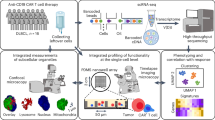Abstract
One of the objectives of treatment for patients with acute promyelocytic leukemia (APL) is to induce tumor cell differentiation and block cell proliferation. Acute promyelocytic leukemia cells (NB4) responded to the combination treatment of 1α,25-dihydroxyvitamin D3 [1α,25(OH)2D3] plus phorbol 12-myristate 13-acetate (PMA) and differentiated into monocyte/macrophage-like cells, as well as expressed strong alkaline phosphatase (ALP) activities. Since PMA has limited clinical application due to its tumor–promoting effect, another protein kinase C activator, bryostatin-1, was currently tested for its interaction with 1α,25(OH)2D3 to induce NB4 cell differentiation and block cell proliferation. Bryostatin-1 alone, but not 1α,25(OH)2D3 alone, significantly inhibited cell proliferation and induced NB4 cell differentiation into monocyte/macrophages; however neither bryostatin-1 nor 1α,25(OH)2D3 alone induced ALP expression. Like PMA, bryostatin-1 synergistically interacted with 1α,25(OH)2D3 to stimulate ALP expression 30-fold over the control (P < 0.001) and further promote appearance of monocyte/macrophage-like cells. the alp stimulation was both time- and dose-dependent. thus, we demonstrate for the first time that the combination of bryostatin-1 and 1α,25(oh)2D3 strongly affect NB4 cell differentiation and proliferation. Therefore, this proposed combination treatment may be an alternatively potential therapeutic regimen for APL patients and assay of ALP may be a more sensitive and facile way to monitor the possible remission of APL patients.
This is a preview of subscription content, access via your institution
Access options
Subscribe to this journal
Receive 12 print issues and online access
$259.00 per year
only $21.58 per issue
Buy this article
- Purchase on Springer Link
- Instant access to full article PDF
Prices may be subject to local taxes which are calculated during checkout
Similar content being viewed by others
Author information
Authors and Affiliations
Rights and permissions
About this article
Cite this article
Song, X., Norman, A. Bryostatin-1 and 1α,25-dihydroxyvitamin D3 synergistically stimulate the differentiation of NB4 acute promyelocytic leukemia cells. Leukemia 13, 275–281 (1999). https://doi.org/10.1038/sj.leu.2401261
Received:
Accepted:
Published:
Issue Date:
DOI: https://doi.org/10.1038/sj.leu.2401261
Keywords
This article is cited by
-
5-Lipoxygenase inhibitors potentiate 1α,25-dihydroxyvitamin D3-induced monocytic differentiation by activating p38 MAPK pathway
Molecular and Cellular Biochemistry (2009)
-
Induction of acute lymphocytic leukemia differentiation by maintenance therapy
Leukemia (2007)



